As a part of Banned Books Week, which ran from September 27th through October 3rd in 2020, we explored the nature of censorship and banning in the United States. Each book conveys a different lesson on how censorship works in a country with an established law protecting freedom of speech and press like the First Amendment.
For that year’s theme, Maine Authors, we took a look at the works of authors with a connection to Maine, for a list of seven books in total.
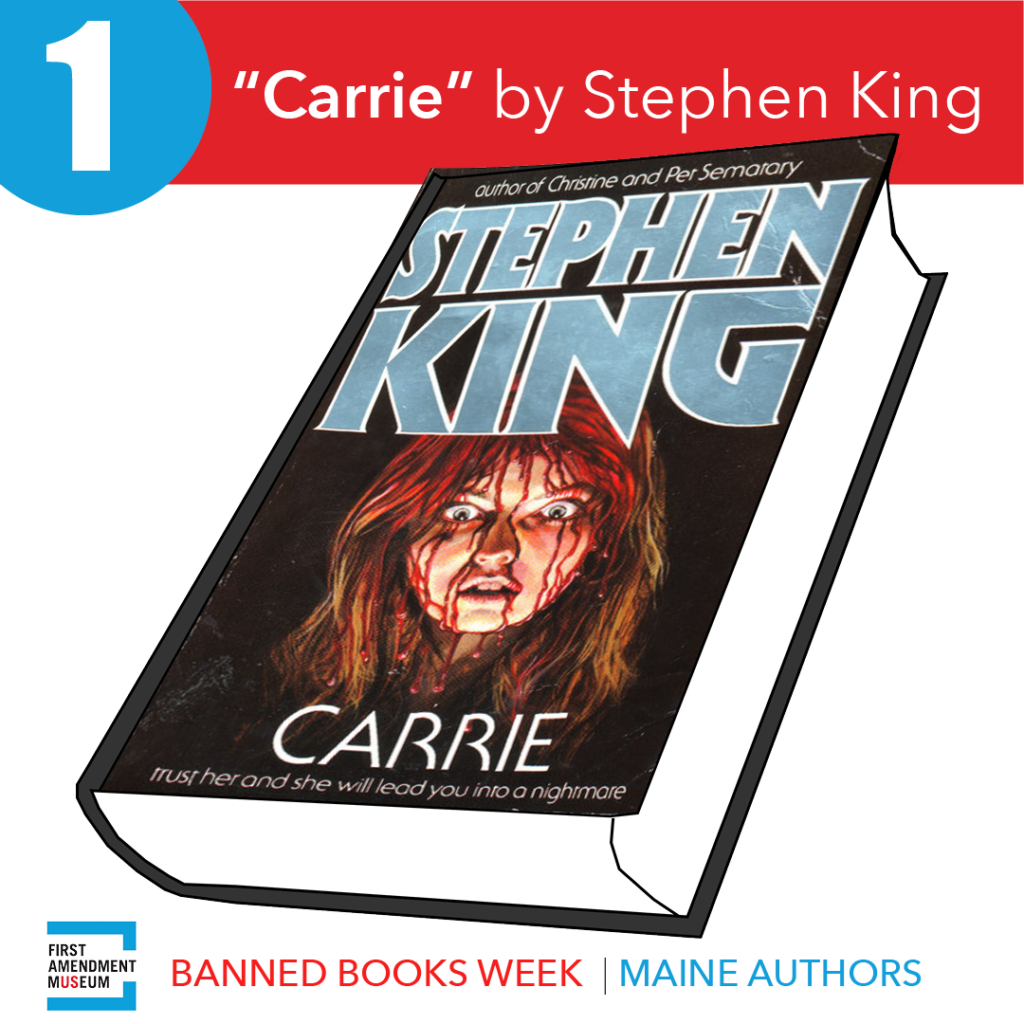
Carrie by Stephen King
One of Bangor author Stephen King’s most famous novels, Carrie revolves around Carrie White, a high-school girl from an abusive religious household who uses her newly discovered telekinetic powers to exact revenge on those who torment her. It is one of the most frequently banned books in United States schools, because of Carrie’s violence, cursing, underage sex, and negative view of religion. Much of the book uses newspaper clippings, magazine articles, letters, and excerpts from books to tell how Carrie destroyed the fictional town of Chamberlain, Maine while exacting revenge on her sadistic classmates and her own mother, Margaret.
This book has been banned in Nevada, Vermont, Iowa, New York, Pennsylvania, and North Dakota. But how does banning a book work? The process of banning a book begins with the individual who is issuing the challenge, usually a parent or librarian. A challenge is “an attempt to remove or restrict materials, based upon the objections of a person or group.” A challenge is the beginning of the process towards getting a book banned, which means that many challenges do not fall through. Schools, bookstores, and libraries are the only places that can ban books that have been challenged. Once a challenge is made, the institution in question can either ban the book from the premises or deny the challenge. Bans are made on an institutional basis, which means if a book is banned in one library, it is not banned in all others.
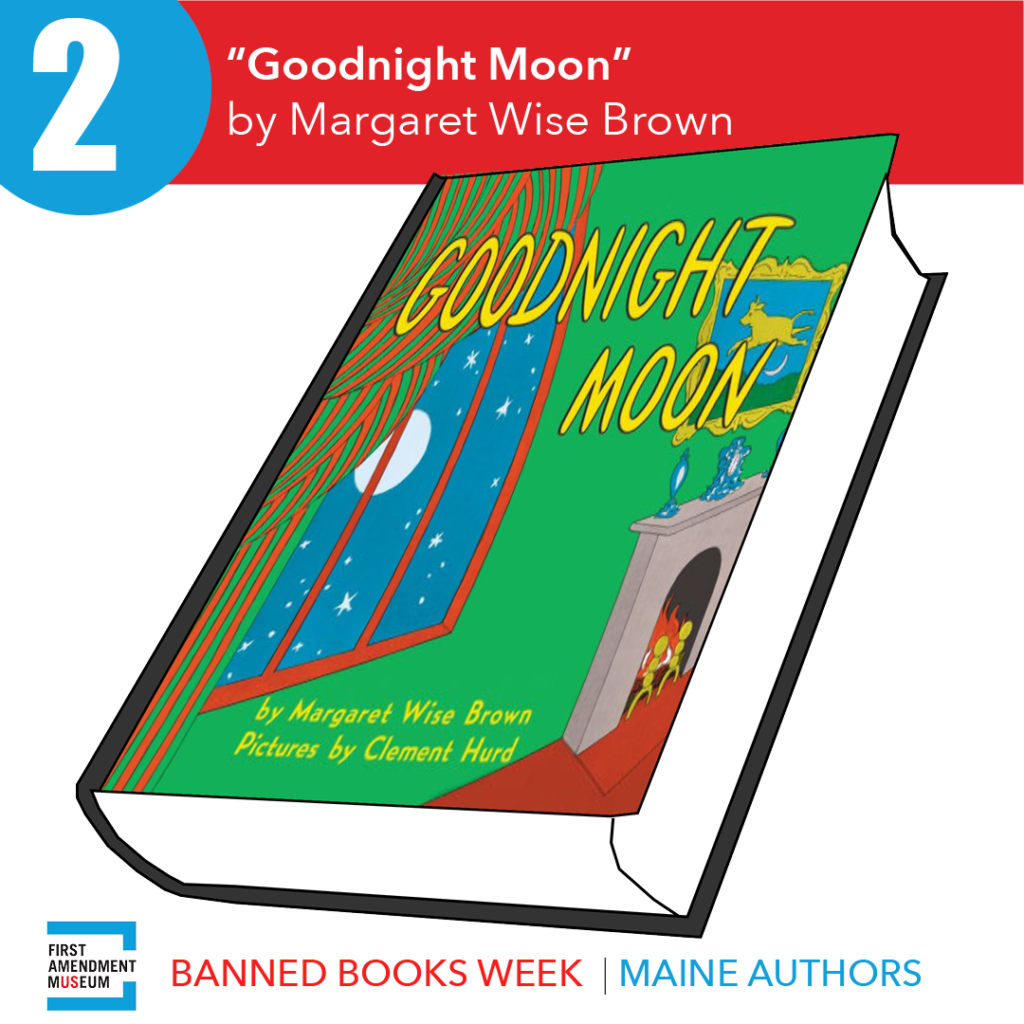
Goodnight Moon by Margaret Wise Brown
How could anyone ban the classic children’s book Goodnight Moon? Anne Carroll Moore was a staffer at the New York Public Library (NYPL) in 1906 and had the responsibility of supervising the children’s collections. She was also a tastemaker whose NYPL-branded lists of recommended children’s books could make or break a book’s fortunes. Moore’s taste was particular, however. When Brown’s famous book was released in 1947, Moore found it an “unbearably sentimental piece of work.” Therefore, the book wasn’t purchased by the New York Public Library, and while children were encouraged to check out all kinds of books from the library’s extensive children’s department, Goodnight Moon was not one of them.
In part because of Moore’s blacklisting, Goodnight Moon wasn’t an immediate commercial success; by 1951 sales had dropped low enough that the publisher considered taking it out of print. The book regained popularity in the 1950s and 1960s as chains such as Waldenbooks and B. Dalton grew. By 1972, the book’s 25th anniversary, Goodnight Moon was nearing 100,000 copies sold a year. Perhaps it was that anniversary that spurred the library to finally stock the book. As mentioned in the blurb above about Carrie, banning can only be done on an institutional level. In the case of Goodnight Moon, it was done on the whim of a single individual with pretty substantial consequences.
Author Margaret Wise Brown would never live to see the explosion in popularity of her book due to the tastes of a single staff member at the NYPL. Brown died in 1952. Her ashes were scattered near her island home in Vinalhaven, Maine.
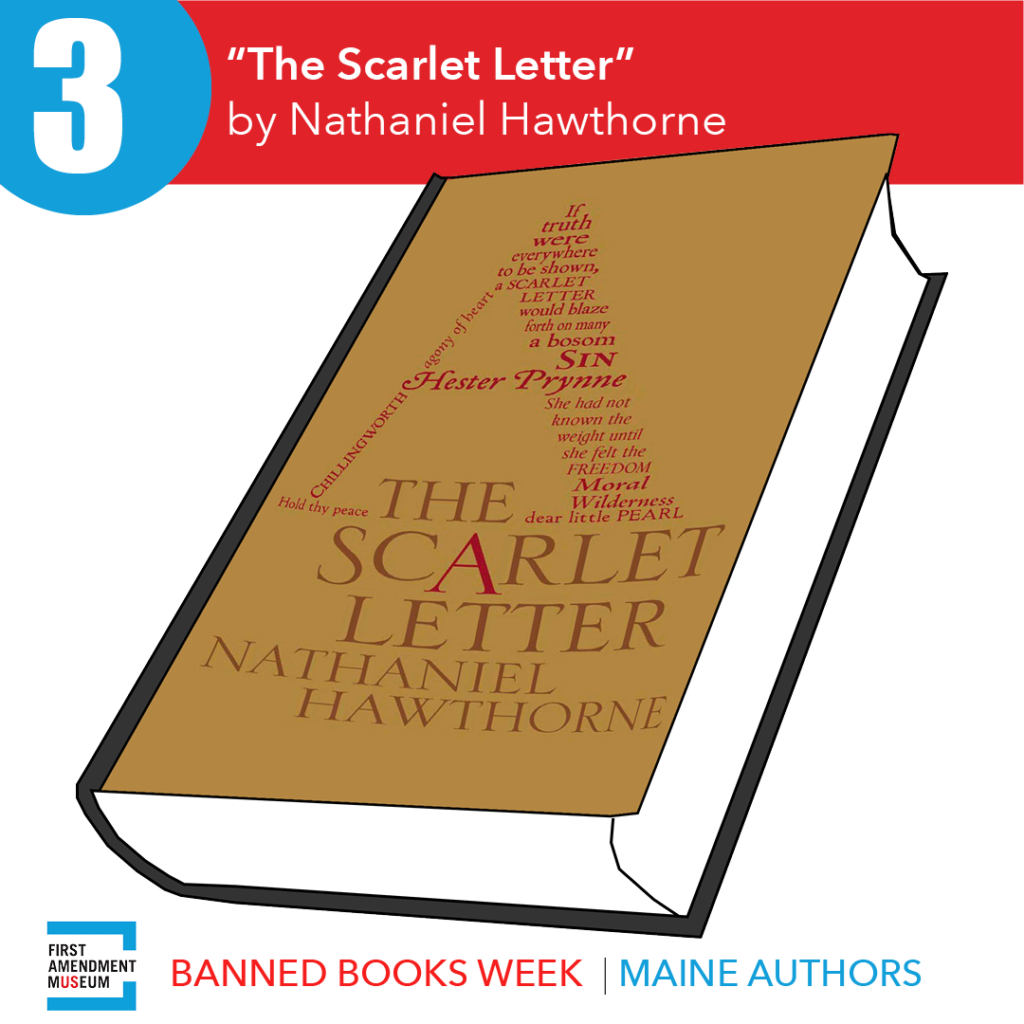
The Scarlet Letter by Nathaniel Hawthorne
The Scarlet Letter, the bane of every high school English student around the country, is a novel published in 1850 by the quintessential New England author, and Bowdoin College graduate, Nathaniel Hawthorne. Set in the Puritan Massachusetts Bay Colony during the years 1642 to 1649, the novel tells the story of Hester Prynne who conceives a daughter through an affair and then struggles to create a new life of repentance and dignity.
The book was met with almost immediate backlash upon its publication with the most vocal group of critics being Hawthorne’s neighbors themselves. Having been born and raised in Salem, Massachusetts, Hawthorne had a lot of controversial opinions about his hometown. When the book was published, a number of prominent Salem residents protested the way Hawthorne portrayed their beloved city. Following the initial brouhaha surrounding the book, it has been challenged and banned multiple times throughout American history with one of the most recent examples being as late as 1977, when a group of parents in one school district challenged it, calling the book “pornographic and obscene.”
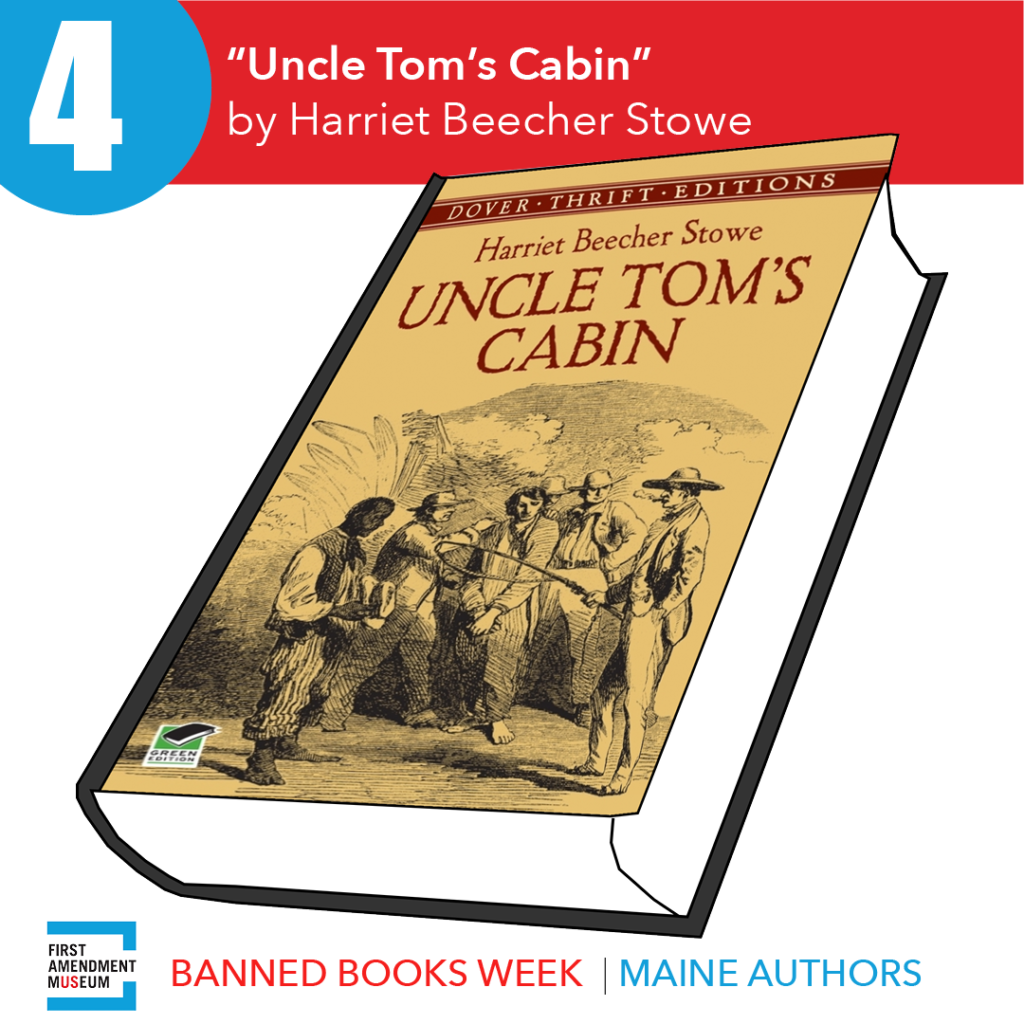
Uncle Tom’s Cabin by Harriet Beecher Stowe
Perhaps the most infamous and consequential banned book of all time is Harriet Beecher Stowe’s Uncle Tom’s Cabin, published in 1852. Stowe, who lived for a period in Brunswick, Maine, was a prominent abolitionist. Unpacking a book with as much baggage as Uncle Tom’s Cabin can be complicated but we will give it a shot. Buckle up.
Uncle Tom’s Cabin tells the story of Uncle Tom, depicted as a saintly, dignified slave. While being transported by boat to auction in New Orleans, Tom saves the life of Little Eva, whose grateful father then purchases Tom. Eva and Tom soon become great friends. Always frail, Eva’s health begins to decline rapidly, and on her deathbed, she asks her father to free all his slaves. He makes plans to do so but is then killed, and the brutal Simon Legree, Tom’s new owner, has Tom whipped to death after he refuses to divulge the whereabouts of certain runaway slaves. Tom maintains a steadfastly Christian attitude toward his own suffering, and Stowe imbues Tom’s death with echoes of Christ’s.
The book was a piece of activism on Stowe’s part and was meant to convey the evils of slavery to a national and general audience. Its anti-slavery message obviously ruffled quite a few feathers in the slave-holding Southern United States, which led to a de facto banishment in many Southern communities. Booksellers were intimidated into not distributing the book. It is perhaps one of the few books in American history that has experienced this form of censorship. A bookseller in Mobile, Alabama was forced to leave town for selling the novel, for example. Stowe herself received many threatening letters from Southern critics – one included the severed ear of a slave.
Today, Uncle Tom’s Cabin is banned for a variety of other reasons. In 1984, Uncle Tom’s Cabin was ”forbidden” in a Waukegan, Illinois school district for its inclusion of racial slurs.

Charlotte’s Web by E.B. White
Charlotte’s Web proves that anything can offend someone, somewhere. Charlotte’s Web is a children’s book about talking animals written by North Brooklin, Maine, resident E.B. White in 1952.
In 2006, several parents in a Kansas school district decided that talking animals are blasphemous and unnatural; passages about the spider dying were also criticized as being “inappropriate subject matter for a children’s book.” According to the parent group at the heart of the issue, “humans are the highest level of God’s creation and are the only creatures that can communicate vocally. Showing lower life forms with human abilities is sacrilegious and disrespectful to God.”
This, unfortunately, was not the only time Charlotte’s Web was the subject of religious controversy. At a junior high school in Batley, West Yorkshire, England, in 2003, the school’s overzealous headteacher decreed that all books featuring pigs should be removed because it could potentially offend the school’s Muslim students and their parents. No such complaints were ever filed by any parent involved with the school, but the school official felt she was being proactive in her policy. Islamic leaders in the community asked the school to drop its ban, which included Charlotte’s Web, Winnie the Pooh, and the Three Little Pigs. The Muslim Council of Britain formally requested an end to the “well-intentioned but misguided” policy, and for all titles to be returned to classroom shelves.
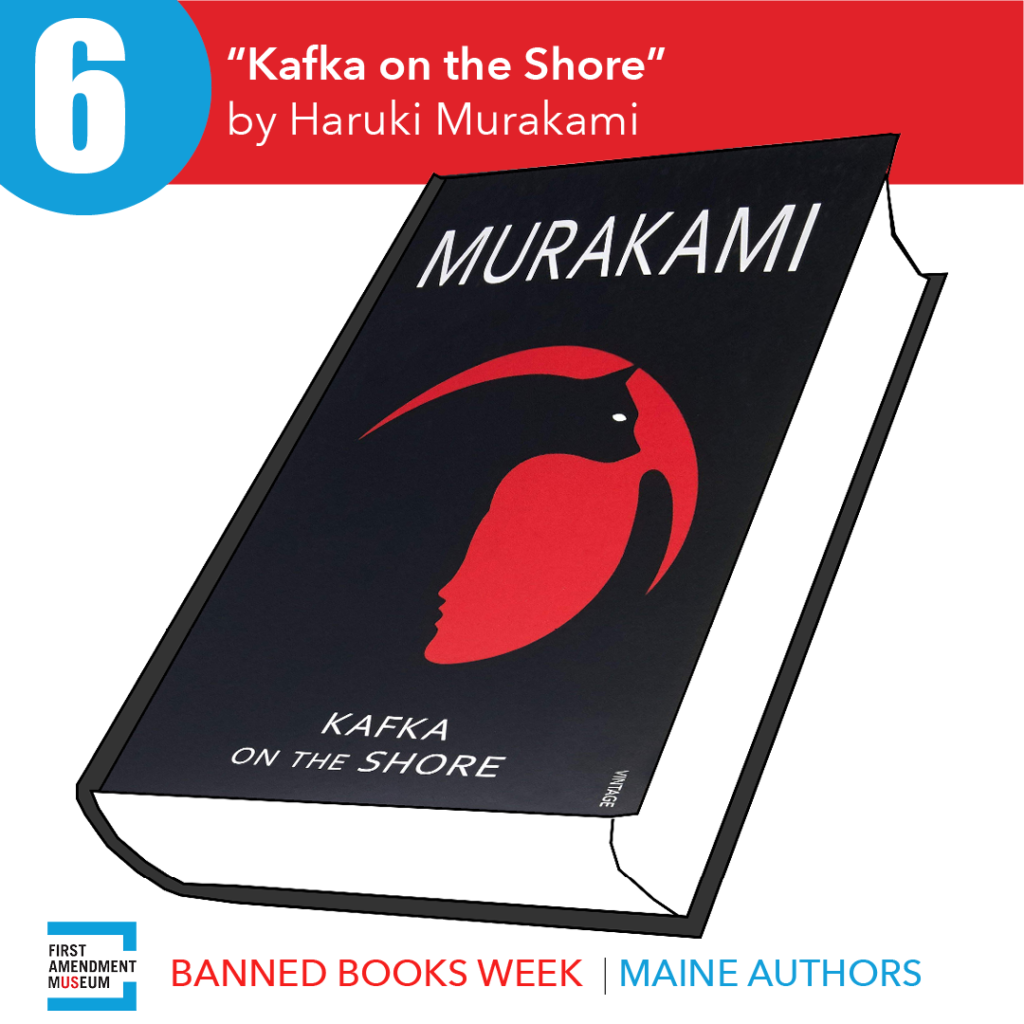
Kafka on the Shore by Haruki Murakami
While Kafka on the Shores‘s author Haruki Murakami does not have a personal tie to Maine, this book does have an interesting Maine connection.
Kafka on the Shore is, as described on Murakami’s website: “powered by two remarkable characters: a teenage boy, Kafka Tamura, who runs away from home either to escape a gruesome oedipal prophecy or to search for his long-missing mother and sister; and an aging simpleton called Nakata, who never recovered from a wartime affliction and now is drawn toward Kafka for reasons that, like the most basic activities of daily life, he cannot fathom. As their paths converge, and the reasons for that convergence become clear, Haruki Murakami enfolds readers in a world where cats talk, fish fall from the sky, and spirits slip out of their bodies to make love or commit murder. Kafka on the Shore displays one of the world’s great storytellers at the peak of his powers.”
The book contains graphic language describing a sexual encounter in one chapter and rape in another. These scenes in particular drew the ire of Maine state representative Amy Arata in 2019. Arata claimed such material was inappropriate for public school students. “Society is finally taking sexual abuse and sexual harassment seriously. And this type of material is so far over the top. If you were to give this to an employee, you’d get sued for sexual harassment. Yet a teacher can give this to a kid and it’s legal,” Arata said. As a Republican lawmaker, she sponsored a bill in the Maine State House that would ban the book from schools in Maine. However, Arata’s bill was shot-down in the State House and never passed.
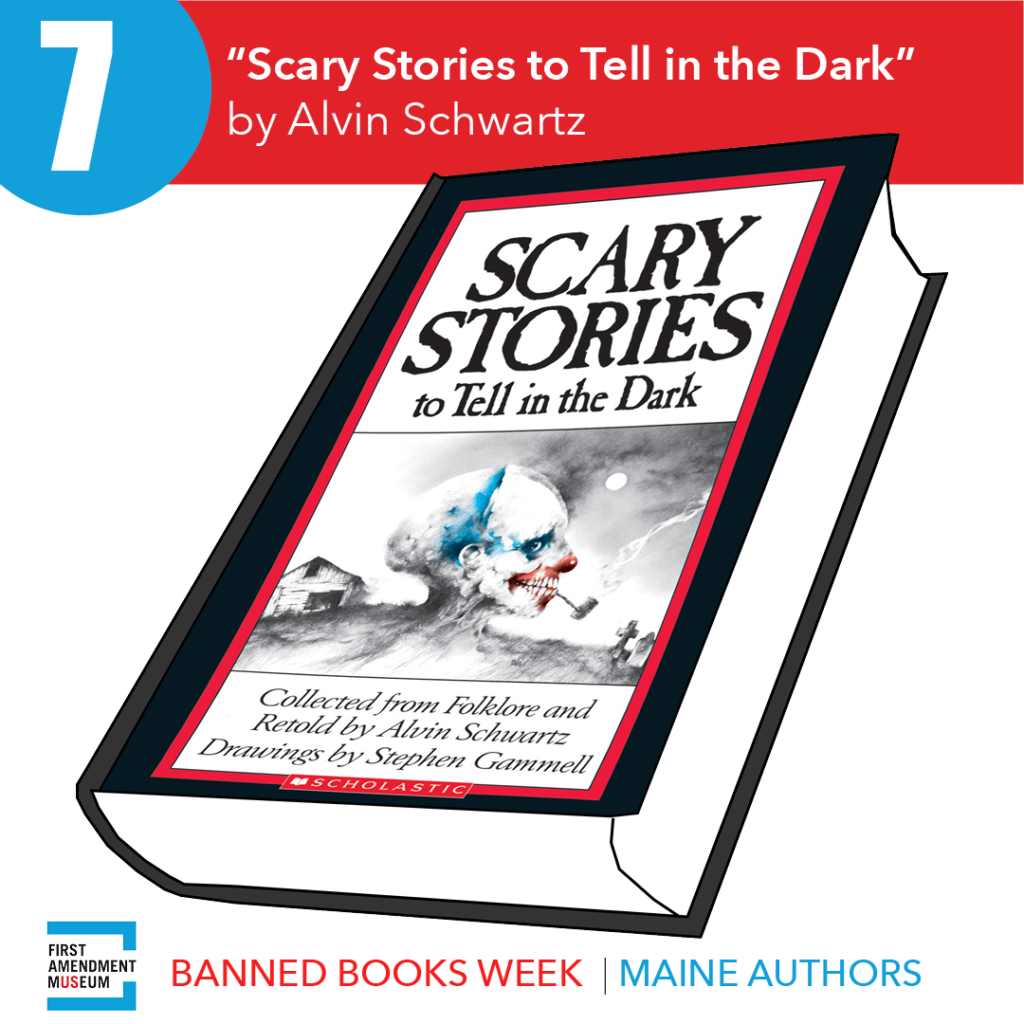
Scary Stories to Tell in the Dark by Alvin Schwartz
Alvin Schwartz, the man most responsible for giving every child born in the 1980s and 1990s nightmares due to his book series, Scary Stories to Tell in the Dark, infamous for their terror-inducing illustrations, was a graduate of Colby College in Waterville, Maine.
The history of Scary Stories to Tell in the Dark is also one mired in countless attempts of censorship and faux hysteria over its supposedly inappropriate content. According to the American Library Association, the series was the single most banned and/or challenged book in the United States. Even in the 2000s, the books remained in the top ten most challenged titles. Scary Stories was criticized for, unsurprisingly, being too scary. Critics slammed Schwartz for supposedly traumatizing a whole generation of kids (perhaps with good reason). The stories themselves are certainly appropriately chilling for their target audience, serving perfectly as a kid’s first introduction to horror. Most of the tales are rooted in familiar folklore or urban legends, with influences running deep across the history of literature.
This particular kind of concern trolling is frequently evoked during attempts at censorship. “Think of the children, they’re simply too delicate and naïve to understand what fiction is.” It’s a dangerous precedent to set when one insists that depicting something is an automatic endorsement of it. Raising concerns over children is typically the easiest way to encourage censorship across the board. The other implication of this attitude is that children should never be exposed to anything that may challenge them, which is really the only way we can grow as human beings.

